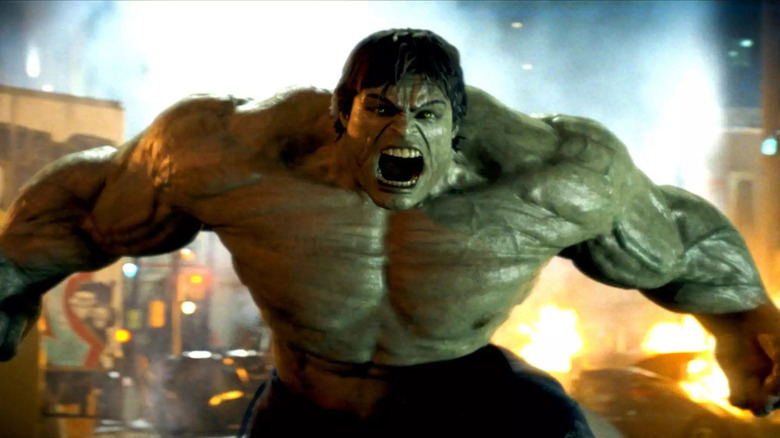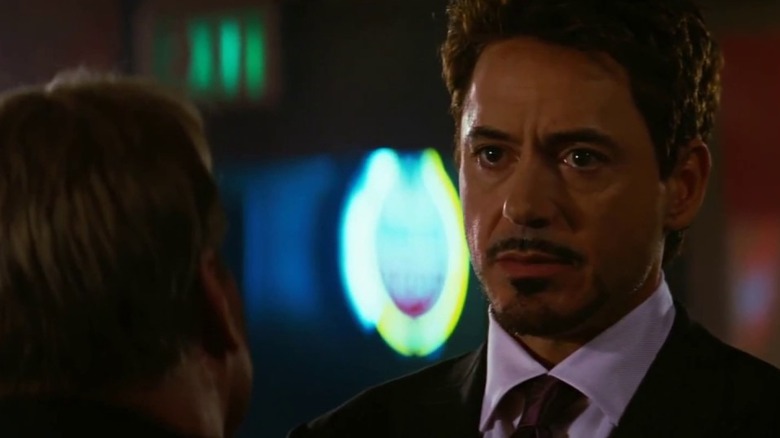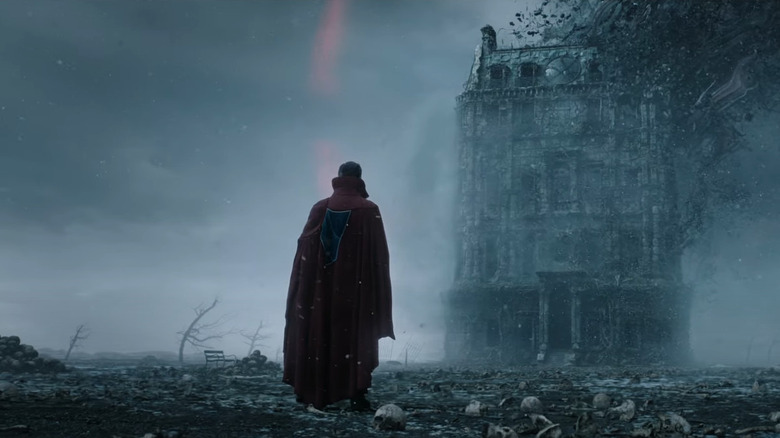Director Louis Leterrier Saw The MCU's Future Before The Incredible Hulk Had Even Finished Filming
Once upon a time, the Marvel Cinematic Universe was a fickle idea. A concept to be tested rigorously in the early days of Marvel Studios, a young production company that was hungry to make do with the limited film rights they had (or shared with Universal Pictures). They had already sold off Spider-Man to Sony, and the X-Men to 20th Century Fox. The grand start of their billion-dollar franchise hinged on "Iron Man" and its follow-ups, including "The Incredible Hulk." The current interconnectivity of the MCU was a rarity back then, but it all started with a few post-credit scenes.
In the summer of 2008, "Iron Man" had just launched an all-new cinematic universe and teased the Avengers initiative in the post-credits scene. Two months later, "The Incredible Hulk" looked to keep the hype train going for what could be a special superhero franchise. In doing so, it employed the same gimmick as its predecessor, opting to include Robert Downey Jr. as Tony Stark in its very own credit scene.
According to "The Incredible Hulk" director Louis Leterrier, he foresaw it as the inevitable future of an interconnected universe. But it was no easy feat and, shockingly enough, it seems Marvel Studios head honcho Kevin Feige had to be convinced to do the first MCU crossover.
'I begged Kevin Feige'
In an interview with Collider in 2008, Leterrier revealed he was adamant about having the post-credit scene, but had to go around convincing the requisite parties to get it done.
"No, I begged Kevin Feige, the President of Marvel when I knew that Robert got cast, I was like we have to do crossovers. Crossovers—it's the future of movie making. Now that you have this, I was the one to beg them to do crossovers and then they said Robert is going to be tough to convince, you know, and all that stuff and everything. So eventually I got to talk to Robert and we liked each other and he said, 'okay I'll come for a...I've got 5 hours that day.' Iron Man was doing lots of reshooting...so I just directed Iron Man crew for one day. I brought William Hurt that day and that was it. It was great."
In an MCU so interconnected nowadays, it seems inevitable the success of the franchise would lead up to this point. However, there was no clear path to victory. Leterrier having to convince Feige is shocking to us now, but any hesitation to do crossovers was warranted. Even now, the only consistently successful franchise to hinge on this gimmick is the MCU.
"The Incredible Hulk" director predicted correctly, but I'd argue the outcome could slowly become self-destructive sooner or later.
Too much of a good thing...
With the Multiverse Saga in full motion, the MCU is entering an entirely new, more ambitious phase of filmmaking. Although it started with "Loki" breaking the walls down of its universe, "Spider-Man: No Way Home" was the first film to dive head-first into alternate realities. The film was a full-blown crossover between three different live-action Spider-Man, however, it remained a story closely tied to its titular character (played by Tom Holland). "Doctor Strange in the Multiverse of Madness" goes even deeper into the multiverse rabbit hole, but does not leave unscathed.
The strengths of the "Doctor Strange" sequel lie close to what director Sam Raimi is known for, rather than the Multiverse shenanigans. The cameos are one-note and purely done for shock and awe, prioritizing crowdpleasing moments rather than meaningful connections between worlds. Rather than building out the MCU step by step, this latest phase wants to skip ahead to the good stuff before laying the foundation. And this is not only reserved for solo films, either. Will "Avengers: Secret Wars" be another example of leaning too heavily into crossovers, or will it pull off what its predecessors ("Infinity War," "Endgame") accomplished in a fraction of the time?
Until we get that answer, we know one thing is certain — Leterrier was right, for better or worse.


